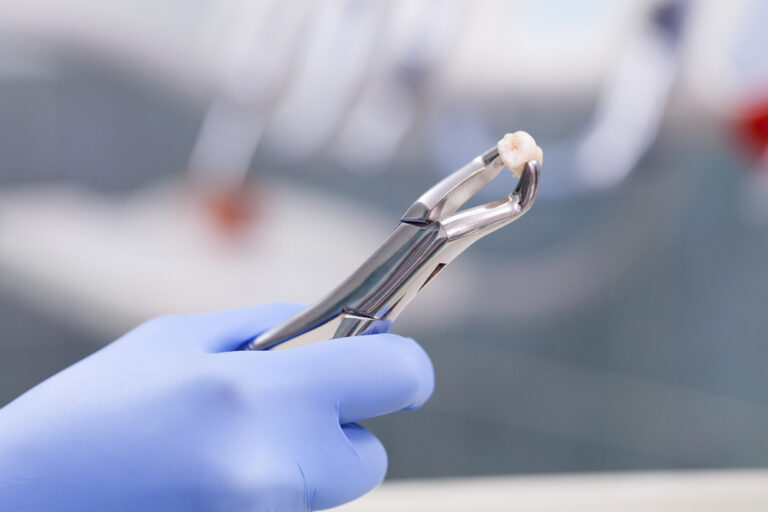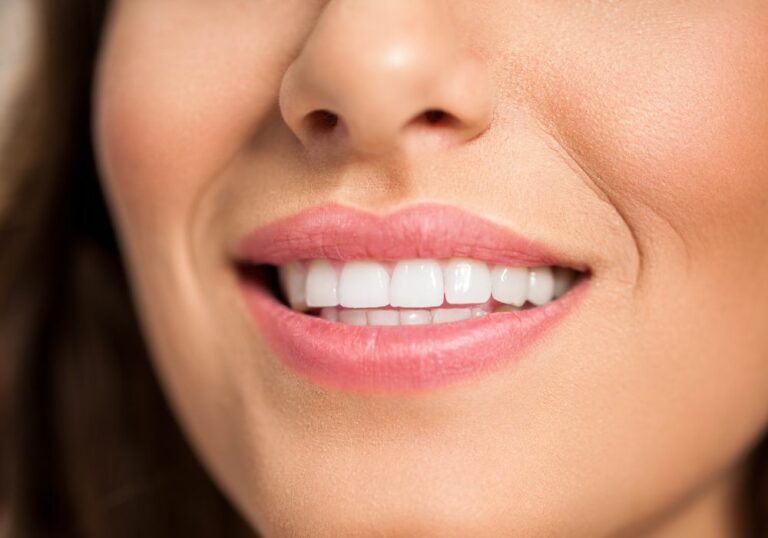It’s normal for your tooth to be sensitive after getting a filling, but severe or long-lasting pain is usually a sign that something is wrong. There are several possible reasons why your tooth may hurt badly after a filling. Understanding the potential causes and getting prompt treatment can help resolve dental pain and prevent more serious complications.
Common Causes of Tooth Pain After Dental Fillings
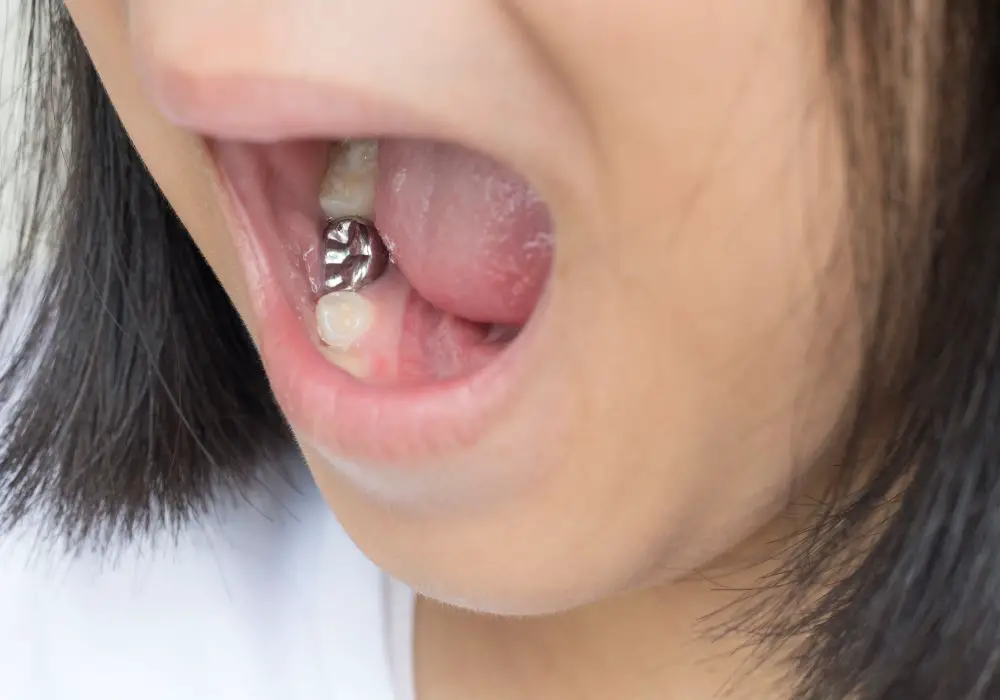
There are a number of issues that can lead to tooth pain and sensitivity after getting a filling:
Infection
An infection is one of the most common causes of pain after a filling. This can happen if:
- Decay was left behind under the filling
- The filling wasn’t properly sealed, allowing bacteria to seep in
- Proper sterilization wasn’t followed, introducing new bacteria
The infection causes inflammation in the tooth pulp and root. Symptoms include:
- Throbbing, pounding pain that persists for days or weeks
- Pain that worsens with chewing or biting down
- Lingering pain that may initially improve with antibiotics but keeps returning
- Pain that wakes you up at night or doesn’t respond to over-the-counter pain medication
- Swelling around the tooth and gums
- Foul odor from the tooth
- Feeling generally unwell, tired, or feverish as the infection spreads
On x-rays, the dentist may see bone loss around the tooth root or dark areas indicating an abscess. Treatment involves antibiotics and possibly root canal therapy or tooth extraction if the pulp is infected.
Inflamed or irritated nerve
The nerves inside the center of the tooth (the pulp) may become irritated during the filling procedure, especially if the cavity was very deep and close to the pulp. Symptoms include:
- Sharp, sudden pain when eating or drinking something hot or cold
- Pain when consuming sweet foods or drinks
- Tooth sensitivity to air that makes you avoid breathing through your mouth
- Lingering pain that lasts for weeks or months after the filling
- Pain that is worse when lying down and relieved when sitting up
Nerve inflammation often gradually improves on its own as the tooth heals, but may require a root canal if severe.
Micro fractures
High-speed drilling and pressure placed on a tooth during a filling can sometimes cause tiny microscopic cracks or fractures. These cracks irritate the tooth pulp and allow bacteria to seep in and cause inflammation. Symptoms of microscopic cracking include:
- Pain when chewing or biting down that seems to come and go
- Sudden, sharp pain when eating hard or crunchy foods
- Increasing pain when consuming hot, cold, or sweet foods/drinks
- Gradual worsening of pain over weeks or months
An x-ray won’t show microscopic cracks, but the dentist can diagnose this problem based on symptoms. Treatment may involve replacing the filling or getting a dental crown if cracks are extensive.
Improper bite alignment
Sometimes a filling may be contoured too high, changing the bite alignment and putting pressure on the tooth when chewing. Symptoms of an improper bite after a filling include:
- Pain, discomfort, or sensitivity when chewing or biting down
- Tooth pain that seems to worsen over time
- Jaw, ear, or headache pain from an uneven bite
- Noticeable difference in bite height between the filled tooth and opposing tooth
Diagnosis is made by a thorough bite examination and x-rays. Adjusting or replacing the high filling usually relieves the discomfort.
Nerve damage
In rare cases, the nerve inside the tooth can become damaged during deep filling procedures or re-treatment of an existing filling. This is irreversible, and leads to long-term tooth pain and sensitivity. Symptoms include:
- Continuous, throbbing pain that doesn’t respond to pain medication
- Hot and cold sensitivity that lingers long after eating
- Numbness or tingling pain in your gums, lips, chin, or tongue
- Pain or sensitivity triggered by just breathing in air
Your dentist will examine tooth vitality with cold sensitivity testing. Nerve damage requires a root canal or tooth extraction since damaged nerves can’t heal.
When to See Your Dentist
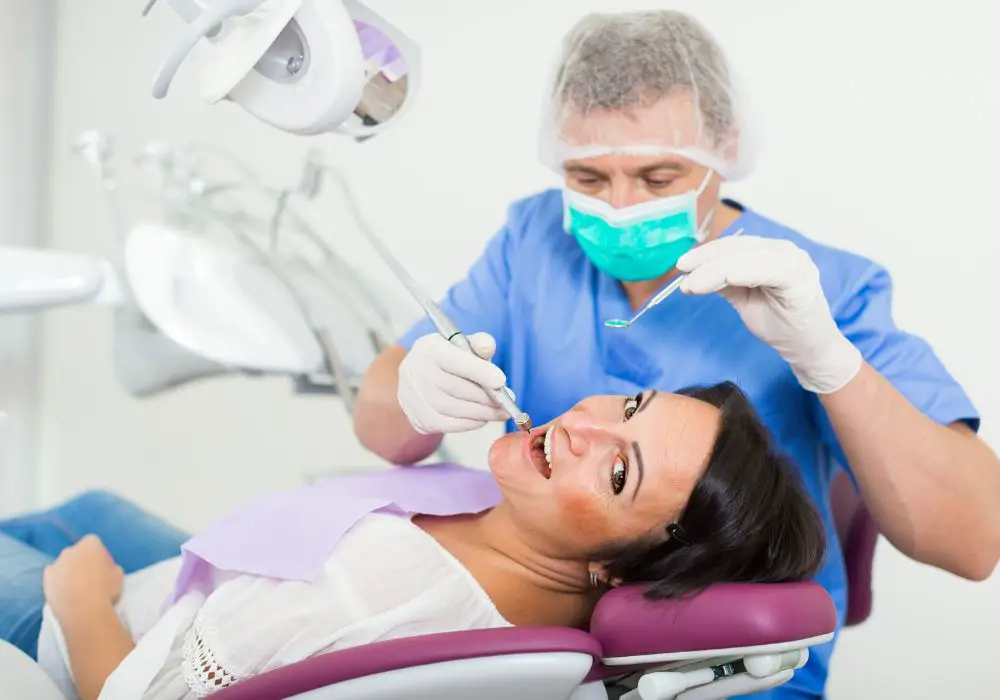
It’s important to have your dentist examine any tooth pain that persists more than 3-5 days after a filling. You should also see your dentist right away if you experience:
- Severe constant pain preventing sleep or eating on the affected tooth
- Increasing swelling around the tooth
- Tooth discoloration
- Fever, chills, or feeling ill
- Sudden pain when biting down
- Lingering hot/cold sensitivity
Leaving issues like infections or fractures untreated allows further damage to the tooth. It also spreads bacteria that can lead to complications in surrounding teeth.
Diagnosis of Tooth Pain After Fillings
The dentist will use a combination of visual examination, x-rays, and sensitivity testing to determine the cause of pain after a filling.
Visual exam
Looking closely at the tooth filling, surrounding gums, and bite allows dentists to check for:
- Signs of infection like swelling, redness, or pus
- Cracks or fractures in the tooth enamel
- Gap between the filling and tooth indicating improper sealing
- Differences in bite height compared to opposing teeth
Dental x-rays
X-rays allow dentists to see below the tooth surface for issues like:
- Bone loss indicating infection
- Decay under the filling
- Damage to tooth structures or nerves
- Improper filling placement or gaps
- Changes in ligaments around the tooth
X-rays are essential for accurate diagnosis of tooth pain.
Cold sensitivity testing
Your dentist will place a cold liquid or instrument against the affected tooth. Lingering pain indicates nerve inflammation. Quick, sharp pain suggests a possible crack extending down to the pulp. Limited or no feeling may indicate a dead nerve from infection.
Bite testing
Biting on a thin plastic stick helps identify problems with bite height. Discomfort when chewing indicates uneven contacts.
Percussion testing
Tapping lightly on the tooth triggers pain if inflammation is present.
Treatments for Painful Teeth After Fillings
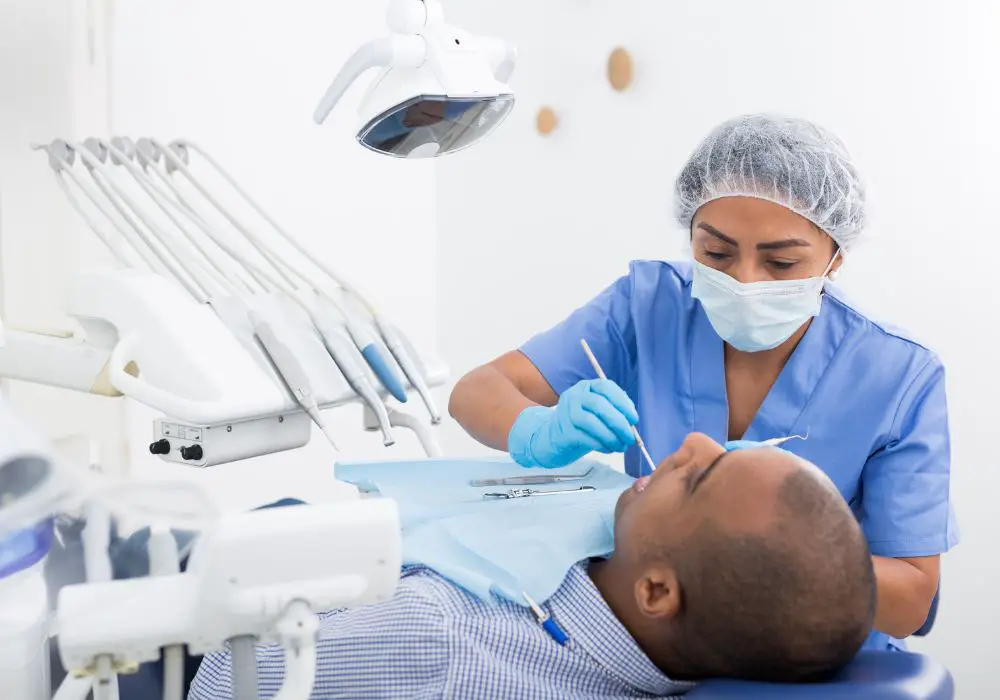
Once the underlying problem is identified, your dentist will recommend appropriate treatment, which may include:
Treating infections
- Antibiotics – Bacterial infections are treated with prescription antibiotics to kill infection and reduce swelling.
- Root canal – If the pulp becomes infected, a root canal is required to clear out diseased tissue and save the tooth.
- Tooth extraction – Severe infections that have spread to tooth roots or jawbone may require pulling the tooth to fully eliminate the infection.
Repairing tooth damage
- Filling replacement – Fillings with gaps, fractures, or improper bite may need replacement with new filling material to seal and reshape the tooth.
- Tooth crown – A crown covers and protects a tooth extensively damaged by decay or cracks.
- Root canal – If inner tooth nerves are severely inflamed or infected, a root canal removes the damaged pulp. A crown is placed afterwards.
- Tooth extraction – Non-restorable tooth damage may require extraction and dental implant placement.
Relieving nerve irritation
- Root canal – If the pulp nerve won’t heal on its own, a root canal removes the inflamed tissue.
- Medication – Steroids or non-steroidal anti-inflammatories (NSAIDs) reduce inflammation.
- Desensitizing toothpaste – Special toothpastes can block sensitivity on irritated nerves.
Correcting bite problems
- Bite adjustment – Shaving down a filling that is too tall can improve alignment.
- Orthodontics – Braces or retainers may be needed to correct overall bite.
- Filling replacement – A new properly contoured filling can fix a poor bite.
- Dental crown – Crowns lengthen short teeth and are custom-fit to the bite.
Prevention of Pain After Future Fillings
You can help minimize dental pain and complications with good oral care:
- Maintain excellent oral hygiene by brushing properly twice a day and flossing once daily. This prevents decay that could get under fillings.
- Avoid chewing on hard items like ice, popcorn kernels, or hard candy which could crack a filling.
- Protect teeth from grinding or clenching while sleeping by getting a custom nightguard from your dentist.
- See your dentist every 6 months for exams and professional cleanings to detect issues early.
- Get small cavities filled before they grow large and require more invasive fillings close to the pulp.
- Follow your dentist’s recommendations for special pastes or rinses if you have sensitive teeth.
When to Seek Emergency Dental Care
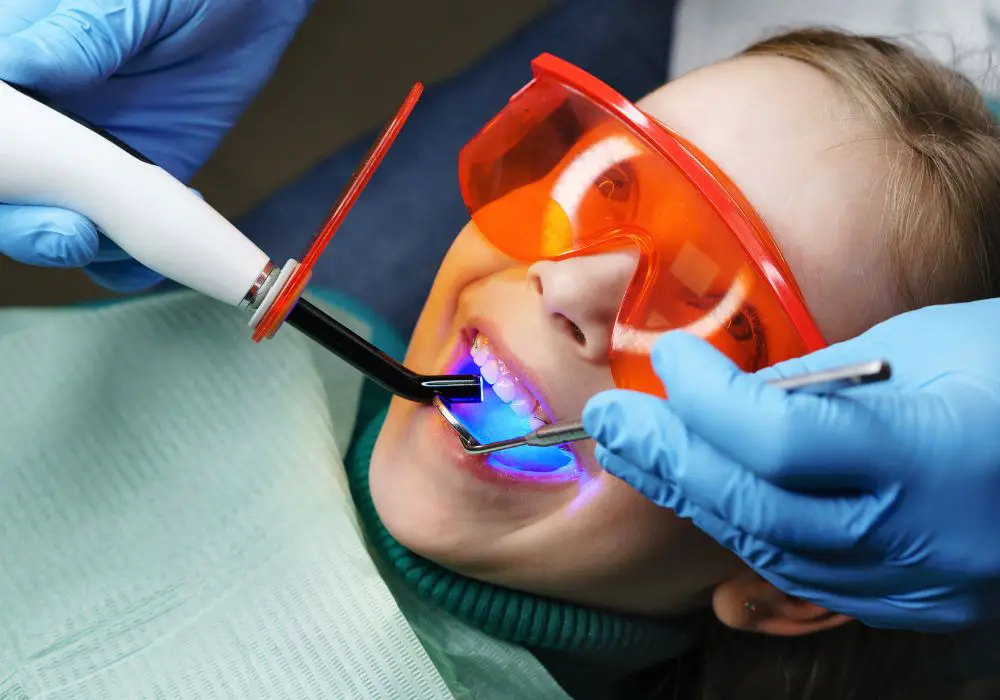
See a dentist immediately if you have any of the following symptoms after a recent filling:
- Severe constant throbbing pain preventing sleep or eating
- Swelling in your face or gums around the tooth
- Tooth feels loose, changes color, or changes temperature sensitivity
- Fever, chills, nausea/vomiting indicating a spreading infection
- Sudden intense pain when biting down
- Pus discharge around the tooth
- Numbness/tingling in your cheek, lips, or tongue
These symptoms indicate a dental emergency requiring prompt treatment. Left untreated, a serious tooth infection can spread to the jaw, brain, or bloodstream.
Frequently Asked Questions
How long should my tooth hurt after getting a filling?
It’s normal to have slight temperature sensitivity or discomfort for 1-2 weeks after a filling. Significant pain lasting over 3-5 days indicates a problem. Contact your dentist if the pain doesn’t steadily improve during the first week.
Can a filling procedure damage a tooth nerve?
It is possible but unlikely for the dentist to injure the tooth nerve during a filling. However, if the cavity was extremely deep and close to the pulp, irritation and inflammation can occur. Use of local anesthesia also helps minimize trauma. Signs of possible nerve damage include continuous throbbing pain and temperature sensitivity.
Why would my tooth still hurt after having a root canal done?
There are several possible reasons for pain after root canal treatment:
- Infection that remained in the tooth roots wasn’t fully cleared out
- A new infection developed in the tooth
- There is a crack in the root or tooth
- The temporary filling or crown doesn’t fit properly
- There is trauma on the tooth when chewing or biting
See your dentist to determine the cause and get the appropriate treatment to resolve lingering pain.
What home remedies help relieve tooth pain until I can see a dentist?
To temporarily ease pain from a recent filling at home:
- Take over-the-counter pain medication like ibuprofen, acetaminophen, or naproxen
- Rinse your mouth with warm salt water 2-3 times a day
- Apply a cold compress to the cheek to minimize swelling
- Eat soft foods avoiding the painful tooth
- Use dental wax to protect sensitive areas from air/food
But dental treatment is still required for severe or persistent pain.
What problems can an untreated tooth infection cause over time?
Left untreated, an infected tooth can lead to:
- Spreading infection in the jawbone, nearby teeth, sinuses, or neck
- Facial swelling and redness
- Formation of a dental abscess (pus-filled cyst)
- Bone loss and tissue damage around the infected tooth
- Sepsis (dangerous blood infection)
See a dentist immediately at the first signs of facial swelling, fever, chills, or trouble breathing around a tooth.
Conclusion
While some sensitivity after a filling is normal, significant lingering pain should never be ignored. It indicates an underlying problem needing prompt dental diagnosis and treatment. With the advanced training of dentists and modern treatment options available, severe tooth pain can be effectively treated. Seeking care quickly preserves your tooth health and prevents dangerous complications.


